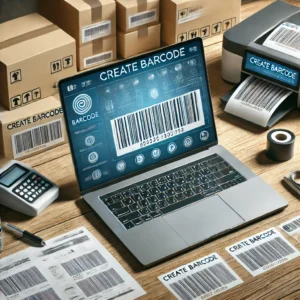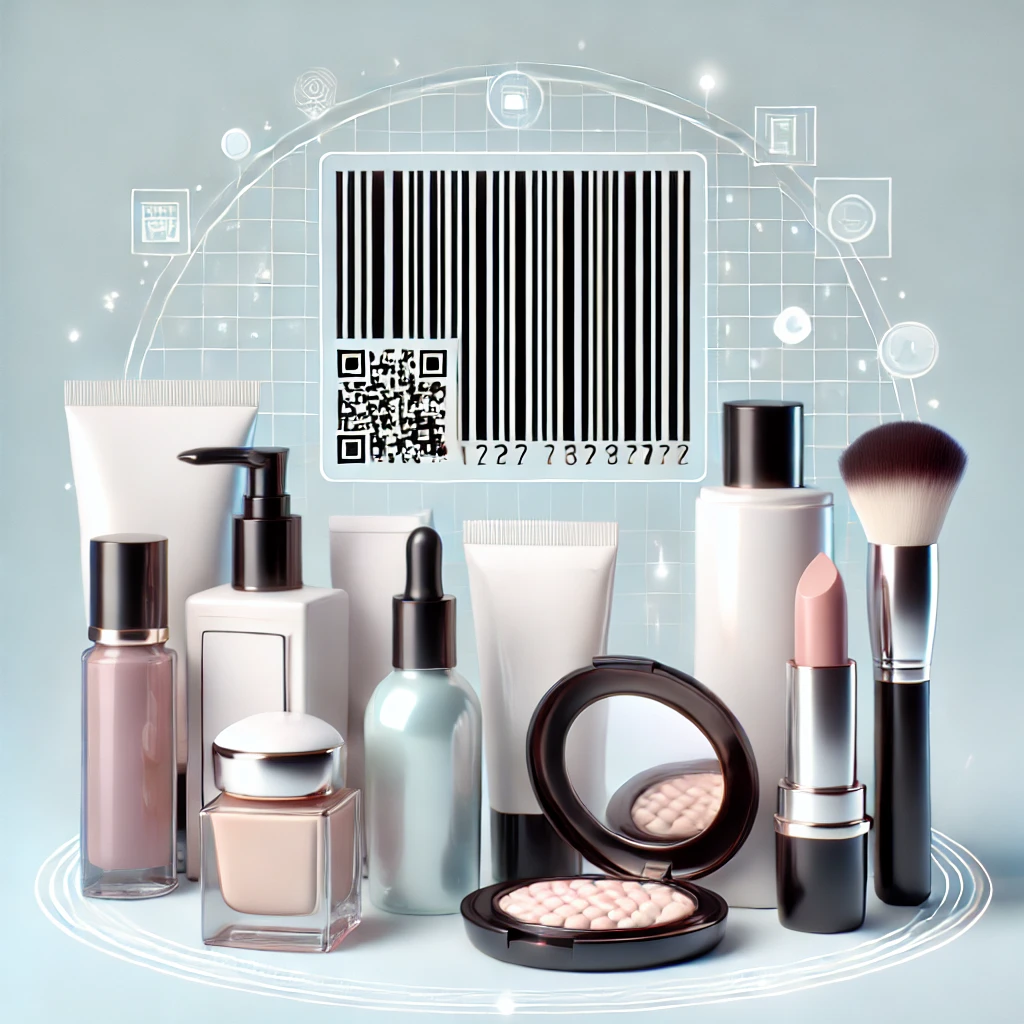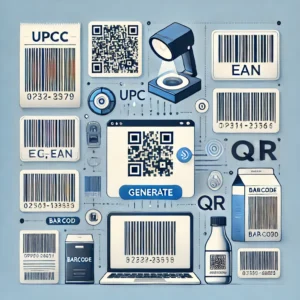
How to Create Barcode: Step-by-Step for Businesses
The development of barcodes is now a completely integrated part of modern business practices, helping businesses streamline operations, lessen errors,

In the beauty cosmetics industry, performance efficiency in every aspect of management—from product and sales management to consumer engagement—is crucial. Barcode technology for cosmetic products has become essential for beauty brands, whether startups or established companies. Cosmetics barcodes provide not only product and inventory identification but also enhance consumer confidence through increased transparency.
This is a long page on the role that barcodes play in the cosmetic industry-from necessity, benefits, and how to implement them. We are going to indulge in the growing role that QR codes and barcode scanners play in packaging so you may make an informed choice when integrating these technologies into your cosmetic business.
Beyond being mere lines on the packaging of the product, a barcode represents something truly important in modern commerce and has benefits for the retailer, the manufacturer, and the consumer. Here are some of the major reasons why cosmetic barcode integration is important:
It can therefore point out the stock levels with more precision, so that brands will be able to respond to the supply and demand in a much more efficient manner-inventory management.
Besides, regulatory compliance is a must in barcodes on most cosmetics worldwide. This makes it traceable and safe to meet safety standards of the particular country.
There are several types of cosmetic product barcodes. Each has its specific use and comes with several advantages:
The most widely-used format is the UPC barcode, and its usage is seen almost in every retail outlet. Contains a 12-digit number, and usage is mainly for the tracking of a single cosmetic product inside the stores.
It is similar to UPC but is used extensively outside North America primarily in Europe. It comes in 13-digit and 8-digit versions.
Unlike the standard barcodes, QR codes can carry more information-from what’s inside the product to how it was produced, and even provide special promotions. Beauty brands are now utilizing QR codes on cosmetic packaging for the tech savvy.
Datamatrix barcodes are tiny in size and allow more data density to be housed on a unit of space, so they too find an application in small cosmetic products, like lipstick or eyeshadow palettes, packaging.
Also Read: QR Code Reader Unpacked
This further improves the inventory accuracy. With a cosmetic barcode, the business can update the stock management systems the moment they scan the barcode of any product. This reduces the chances of human errors, which often occur when using manual methods of tracking.
It accelerates checkouts for the supermarket and online retail. The retailers can hasten data entry of a product using a cosmetic barcode scanner thereby saving precious time that would be wasted while waiting for consumers.
With barcodes, the whole supply chain process becomes streamlined. From manufacture to the point of sale, the product tracking and monitoring become efficient with the help of barcodes, thereby enabling better management of inventories and logistics.
Actually, a barcode is one way beauty brands can directly interact with their consumers. Through a barcode, a customer is able to scan it and collect a whole lot of information about that particular product, its ingredients, its manufacturing process, and even how to go about using the same.
Before you can print barcodes on your cosmetics, you must first decide what type of barcode you want to use. While UPC and EAN codes have to be used in a retail situation, QR codes are perfect for improving customer interaction.
Get your barcode registered with a legitimate organization like GS1. GS1’s barcodes are one-of-a-kind and accepted worldwide, and if you sell to countries outside where the products will be sold, this is extremely important.
When attaching barcodes and QR codes to your packaging, ensure that they are scannable, readable, yet not so designed such that your cosmetic packaging develops barcodes and QR codes as central design elements. In that case, hire a professional designer to make an equal balance between your brand package’s design and practical usability.
Before you start selling your products, it is very much important to scan test your barcodes so that they are easily readable for the barcode makeup scanners in the retail. Bars that do not scan clearly result in substantial delays and frustration at check out.
Also Read: The Ultimate Guide to Retail Billing Software
Barcode scanners streamline cosmetic sales processes by contributing to the effective functioning of barcode technology for cosmetic products. Here are some areas where barcode technology enhances the sales process:
With the integration of makeup barcode scanners, barcodes complete the sale process dramatically saving customers lots of time pending in a queue.
Cosmetics barcode scanners are precious for a store manager as they, at the time of checking of inventory, enable fast and accurate counting of stocks thereby cutting down human mistakes.
Some of the sophisticated barcode scanners come integrated with security systems that help detect possible theft. A barcode scanned before a product leaves the store will make sure it was purchased correctly, thus providing a great deal with additional security.
With the rise of mobile technology, beauty brands now use QR codes as a platform to engage consumers. QR codes can store more information than regular barcodes, opening up numerous possibilities for beauty brands using barcodes for cosmetic products, such as:
Interactive Experiences: Scanning a QR code opens avenues where consumers can access video tutorials, product usage tips, or content that may be promotional in nature.
Transparency and Trust: The in-depth details of what is used in formulation for the scanned consumers via QR code, hence the formulations are transparent.
Environmental Initiatives: Brands can communicate with customers via QR codes on environmental initiatives, such as recycling or cruelty-free testing certifications.
Also Read: Get the Right Barcode Billing Software Top Unlock Efficiency Fully
In coding cosmetic products with barcodes, brands should be aware of several legal requirements related to the barcode for cosmetic products:
Compliance with local regulations: Every country has its specific regulation regarding barcodes. For instance, in Europe, a product needs to be EAN compliant. In the US, UPC codes are mandatory.
Labeling specifications: Apart from the aesthetically present barcodes, details regarding ingredients, date of expiry, as well as production details, need to be present, which is in accordance with the health and safety norms.
Trademark and Copyright Protection: Brands also protect their intellectual property by having barcodes. Brands register their barcodes so that the counterfeiters cannot make use of the same product identifiers.
Visibility of Barcode: Always place the barcode in an easy and scannable position. Do not interfere with the aesthetic of the cosmetic product.
Use High-Quality Printing: Dull and poorly printed barcodes will cause a consumer and/or retailer to reject scans-thus wasting time for everyone. See to it that your packaging is print with the very best quality available.
Educate Retailers and Staff: If you are using QR codes along with traditional cosmetic barcodes, see to it that retailers and staff are able to recognize your barcodes.
Also Read: Different Types of Barcodes and Labels
The use of barcodes has evolved alongside technological advancements, and their role in the beauty industry is no exception. As technology progresses, barcode for cosmetic products will be reshaped by the following trends:
While QR codes and barcodes are still the most popular one used today, other new technologies like NFC tags and RFID tags are also gaining popular momentum. These new technologies make it possible to stockpile even more data, and track products in a ‘real-time’ manner all along the supply chain. This NFC tag or such RFID tag in cosmetics can make it possible for consumers to touch their smartphones for discovering instant product information, promotional content or offers to buy.
By using barcodes with blockchain technology, the issue of counterfeit cosmetic products can simply be achieve easily. A unique digital fingerprint assigned to the product within the blockchain would trace each product through a barcode cosmetic scanner. Consumers and retailers would therefore be certain of what they purchase.
Of course, sustainability has emerged as a crucial issue for consumers as much as for businesses. Cosmetic barcode systems are increasingly becoming a carrier of eco-related information. Upon scanning the barcode, a customer could actually view the environmental impacts of the product, raw materials used in packaging, and even carbon footprint. This makes consumers environmentally conscious and encourages brands to differentiate by being eco-friendly.
Currently, retailers and brands are using AI as well as machine learning coupled with barcodes to achieve more profound insights related to their consumers. For instance, the information that the barcode scanner pulls up can be studied for buying patterns, needs inventory, and even forecasting trends in future cosmetics. Data-driven decision-making has therefore been helpful for brands with respect to decisions involving launching of new products, marketing strategies, and inventory management.
While the benefits of using barcodes for cosmetic products are clear, some challenges must be addressed to implement them properly:
The most common issue that most beauty companies face is the introduction of a barcode without interfering with their packing’s aesthetic appeal. Cosmetic items are highly aesthetic in character; the bar code must be non obtrusive but functional.
Solution: Brands will collaborate with packaging designers so that the barcode actually becomes part of the design and when space is at an absolute minimum use a tiny but highly dense like a Datamatrix code.
Barcode readers sometimes cannot scan a barcode due to poor printing, smearing, or low-quality labels.
Solution: Invest in high quality barcode printing technologies and test your barcodes on some scanning machines from time to time eliminating mistakes, and positioning and proper alignment during the printing process.
If you plan on selling your products globally, ensure that your barcodes for your cosmetics are meeting the international standards such as GS1 and comply with the regulations of any country that you aim to sell in for the labeling.
Solution: If you work with world bodies like GS1, which register and authenticate your barcodes, you can be assure that your products comply with several markets.
Actually, nowadays, the growing trend of counterfeit products has also led to fake barcodes, especially when there is a boom in beauty and cosmetic products.
Solution: Use advanced technologies like QR codes, NFC tags, or blockchain-enabled barcodes to prevent counterfeiting. Consumers easily scan through and verify the authenticity of a product using such technologies.
Also Read: Barcode Asset and Inventory Tracking: Meaning, Benefits, & More?
Here are a few real-life examples of how leading beauty brands use barcode technology for cosmetic products to demonstrate its practical applications:
L’Oréal, one of the world’s major beauty brands, has adopted the policy of QR coding of their packaging and products. Thus, consumers are able to learn much more about what they buy and the contents they have in the product packaging. For instance, scanning the QR code allows consumers to learn about the product’s contents, manufacturing process, and adopted sustainability efforts. This therefore translates to improved consumer trust and loyalty.
Cosmetic Company Kiehl’s has also availed of the implementation of barcodes on all its products to administer stock as efficiently as possible. Achieving a barcode for its entire product catalog has been effective in understanding its stock levels, preventing unnecessary waste, and timely responding to demand supply chains. The firm has integrated barcode makeup scanners into its business process for increased effectiveness at reduced costs.
Sephora is the beauty retailer that employs QR codes to make in-store retailing easy and enjoyable. From a barcode of a cosmetic product, a customer can access information that gives them an in-depth review of that particular product, video tutorial on how to use the product best, and break down of each ingredient.
Sephora is the first retailer to merge in-store and digital buying experiences for the techie beauties out there.
Cosmetic companies will automatically require barcodes to act as an effective tool for efficiency, security, and transparency. Whether you are using the more common UPC and EAN barcodes or using the power of QR codes, these technologies will change not only how you handle your inventory and how you sell your products but also how you deal with customers.
Proper application of cosmetic barcodes supports the operational efficiency of beauty companies and increases consumer trust by providing confidence in following requirements for regulations that give a holistic experience to the customers.
By using these makeup barcode scanners along with well-designed barcodes, the cosmetic industry is sweeping through most of the real action, leaving its rivals in a tough spot.

The development of barcodes is now a completely integrated part of modern business practices, helping businesses streamline operations, lessen errors,

Sarcodes are responsible for changing the inventory management skills within businesses, tracking products, and improving their operational efficiency. Whether you

Street No 5, Opp. Mohar Singh Hospital, Hisar Rd, Bus Stand Sirsa, Haryana
+919050073902
